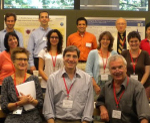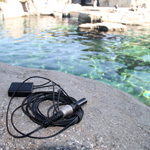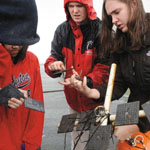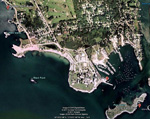|
|
 |
 |
 |
 |
|
 |
10.11.2012
PacIOOS offers two classroom activities aimed at middle to high school level students exploring sea level rise and coral bleaching.
MORE >>
|
|
|
10.11.2012
The Hawaiian Islands Humpback Whale National Marine Sanctuary has developed a humpbackwhale migration game online for elementary students.
MORE >>
|
 |
10.11.2012
Humbpack whale-based games for elementary and middle school students including a section for teachers with classroom programs, students at sea programs, ocean-oriented field trips, publications, and education offerings.
MORE >>
|
 |
10.11.2012
A poster produced by the Coral Reef Alliance about coral reef ecosystem services.
MORE >>
|
 |
10.11.2012
The Hawaii Environmental Education Alliance Resource Database offers teachers and the public a searchable database with all environmental education resources in Hawaii including field sites, curriculum, and organizations.
MORE >>
|
 |
10.08.2012
Resources suggested after the successful Broadening Participation workshop held at URI GSO in September 2012.
MORE >>
|
 |
08.15.2012
This eight-page tabloid, funded through a Protect Our Reefs grant made to the Smithsonian Marine Station at Fort Pierce, contains information on coral reef ecosystems, with quizzes, a word search, and a word scramble!
MORE >>
|
 |
07.30.2012
Dolphins in the Indian River Lagoon with lesions inspired this study of the level of toxicity in fish flesh using a unique method called "Microtox". This method utilizes the level of bioluminescence in bacteria to identify toxicity in fishes. In this experiment the toxic chemical identified was the heavy metal, mercury.
MORE >>
|
 |
07.30.2012
This study evaluated the composition of floating mats in the Indian River Lagoon. They found that the majority of the mats were comprised of Lyngbya, a common cyanobacteria.
MORE >>
|
 |
 06.29.2012
06.29.2012
COSEE OCEAN gave a presentation on network analysis of educational networks at NetSci 2012. Steve Uzzo and Catherine Cramer gave a presentation on the Social Network Analysis (SNA) of COSEE OCEAN and NEOSEC, including background, methodology and outcomes, and outlined some potential new investigations. The presentation was part of the NetSciEd symposium.
MORE >>
|
 |
 04.30.2012
04.30.2012
During spring 2012, COSEE-TEK has taken the plunge into underwater acoustics with two educational institutes focusing on the engineering and application of low-cost hydrophones. COSEE-TEK technicians have developed this do-it-yourself (DIY) kit using affordable, store-bought parts for relatively easy implementation in the classroom or for citizen science activities.
MORE >>
|
 |
04.10.2012
With the rise of YouTube and other online outlets, short videos have become a part of the daily information stream for students, educators, and citizens. In this 2012 Ocean Sciences presentation, Catherine Cramer shares the COSEE OCEAN template: how to produce an engaging video, featuring a scientist communicating their research clearly, that will capture the attention of a broad audience in under three minutes.
MORE >>
|
 |
04.05.2012
Want to make salinity and its connections to the water cycle, ocean circulation and climate come alive for your students? NASA Aquarius Education and Public Outreach has teamed up with COSEE-OS to conduct three public and four educator-focused webinars, as well as a pre-launch workshop at NASA Jet Propulsion Laboratory.
MORE >>
|
 |
 04.01.2012
04.01.2012
An environmental science teacher and students at Waterford High School in Waterford, CT are currently participating in a COSEE-TEK lead citizen science project to monitor water born pesticides and marine invertebrate communities in Niantic Bay area, Long Island Sound, and throughout the U.S.
MORE >>
|
 |
03.19.2012
The 2008 North Atlantic Bloom Experiment (NAB08) was a collaborative effort to observe an entire phytoplankton spring bloom. To broadly disseminate results and contribute to the public’s understanding of ocean science, NAB08 participants collaborated with COSEE-OS to present a series of five webinars describing the motivations and findings of this multidisciplinary experiment.
MORE >>
|
 |
03.14.2012
COSEE-OS External Evaluator Dr. Ted Repa, representing four COSEE Centers (California, NOW, Ocean Systems and West), shared end-of-workshop evaluations from the Faculty/Graduate Student Collaborative workshop series conducted by these Centers in 2010 and 2011 at the 2012 Ocean Sciences Meeting.
MORE >>
|
 |
03.14.2012
The Aquarius mission is brimming with educational content that hits all four areas of STEM: science, technology, engineering and mathematics. This poster, presented at the 2012 Ocean Sciences Meeting, summarizes available educational products and opportunities.
MORE >>
|
 |
02.24.2012
Dive down to the depths of the ocean with world-renowned oceanographer, Dr. Edie Widder, and explore the concepts of interdependence through inquiry-based activities for middle school science.
MORE >>
|
 |
02.23.2012
The ORCA team addresses the misconception that scientists are boring and that science does not involve creativity.
MORE >>
|
 |
02.23.2012
COSEE Florida presents this short video about the importance of genetic variation in two species of corals and hybrid of the two.
MORE >>
|
 |
02.21.2012
Are scientists cold and unemotional robots? Actually, science is a very human activity and relies on passion and creativity.
MORE >>
|
 |
02.21.2012
Objectivity is the ability to observe and report something without personal bias. In this study, clams were evaluated for their tolerance to temperature and salinity.
MORE >>
|
 |
02.21.2012
Scientists can be creative. Observational studies of the Indian River Lagoon resulted in a creative approach to determine if cyanobacteria is edible to sea urchins. Creativity helped to streamline experimental technique and make the job of scientists much easier.
MORE >>
|
 |
02.16.2012
COSEE OCEAN has developed a simple, easy to use guide to help scientists make their own short videos about their research and their scientific career.
MORE >>
|
 |
 02.12.2012
02.12.2012
In conjunction with COSEE-TEK's "EVA & BOB Project", Project Oceanology has deployed three basic observation buoys (BOBs) in and around the mouth of the Thames River in the Eastern portion of Long Island Sound and they have been collecting water quality data including biological recruitment, organic contaminants, water temperature and light availability since then. Explore the map to access data and images from each location.
MORE >>
|
 |
|
 |
 |
 |
 |
|
 |
|

